Schuncke, Ludwig (1810 – 1834)
Grande Sonate
SKU:FD014
This is a downloadable product. Looking for our print edition on premium paper? Check out Schuncke: Grande Sonate.
Couldn't load pickup availability
Description
Ludwig Schuncke’s Grande Sonate in F minor (1832) is one of the most remarkable piano sonatas of its generation—powerful, inventive, and emotionally charged. Written at the age of 22 and dedicated to his close friend Robert Schumann, the sonata fuses bold Romantic expression with structural mastery. A simple three-note motif recurs throughout the work, providing cohesion across four dramatically contrasted movements.
The opening Allegro unfolds from this motif into a landscape of shifting rhythms and contrapuntal dialogue. A fiery Scherzo and solemn slow movement follow, before the finale erupts with virtuosic energy and emotional weight. While the writing is often brilliant and technically demanding, the sonata’s greatest strength lies in its expressive depth and formal unity. Schuncke’s premature death at 23 curtailed a promising career, but this work alone affirms his place among the most original voices of the early Romantic generation.
Quick Overview
- Composer: Ludwig Schuncke (1810–1834)
- Edition: Urtext (FE014)
- File Format: PDF
- Contents: 42 pages total (5 pages introduction and source commentary, 35 pages music)
- Difficulty: Level 8–9 / 10
- Editor: Martijn Vromans
- Pages: 35 + V pages.
About the Composer
About the Composer
Ludwig Schuncke (1810–1834) was a gifted German pianist and composer whose brief career left a lasting impression on early Romantic music. A close friend and artistic ally of Robert Schumann, he composed with striking energy, harmonic boldness, and a flair for dramatic contrasts. Though largely forgotten today, his piano works reveal a restless imagination and a youthful intensity that point to a talent cut short far too soon.
Contents
Contents
- Introduction
- Grande Sonate, Opus 3
- Critical Commentary
Share
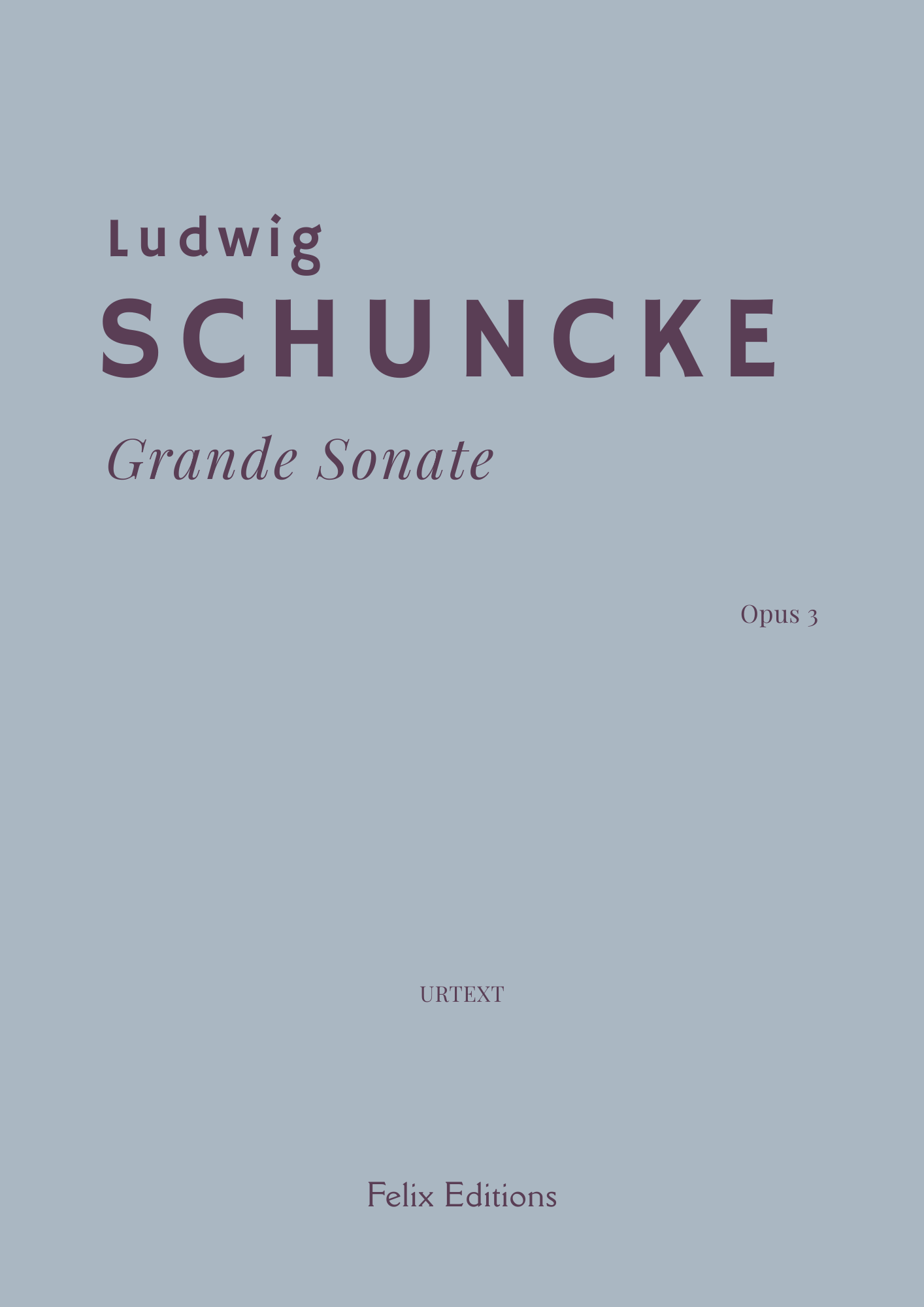
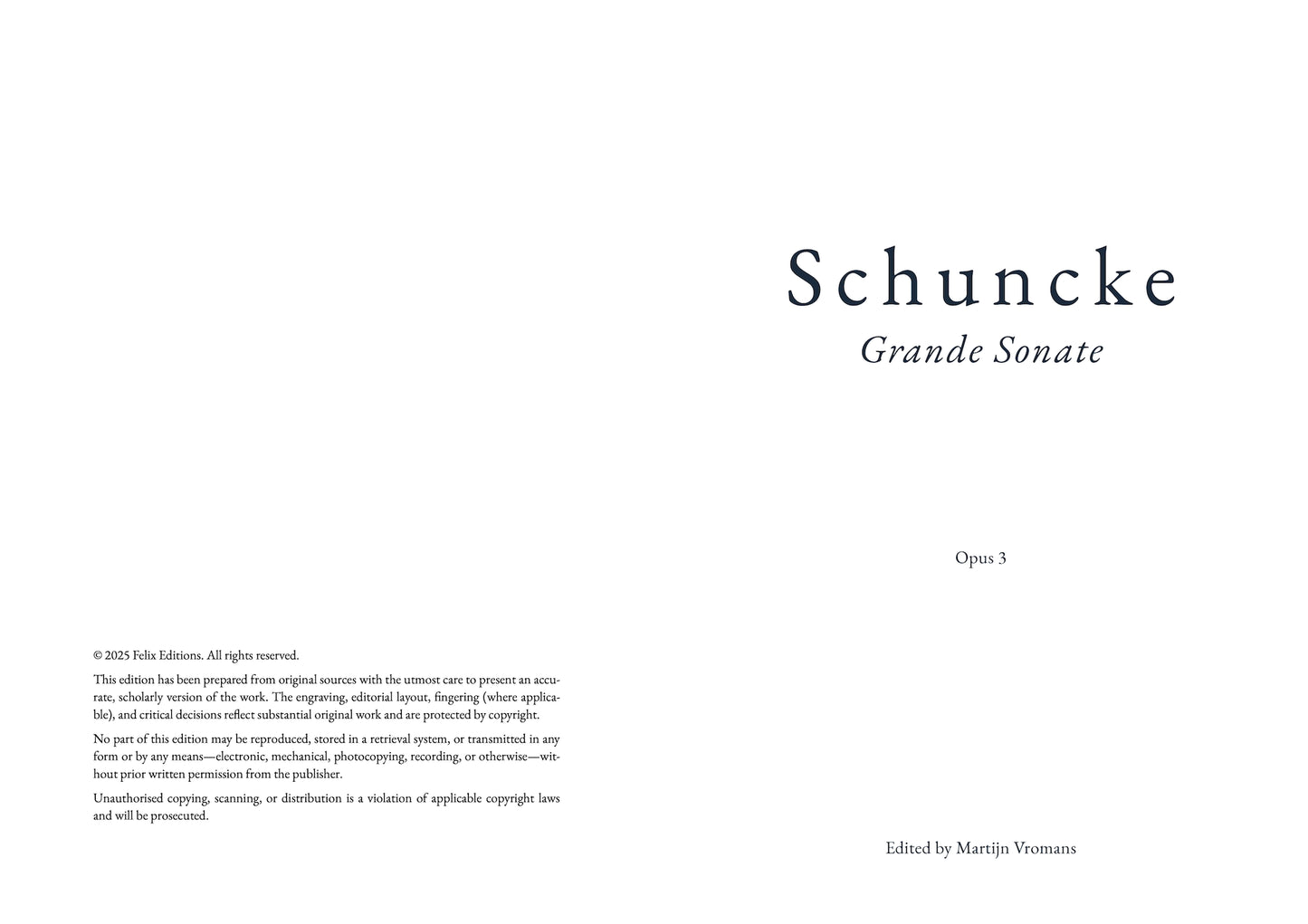
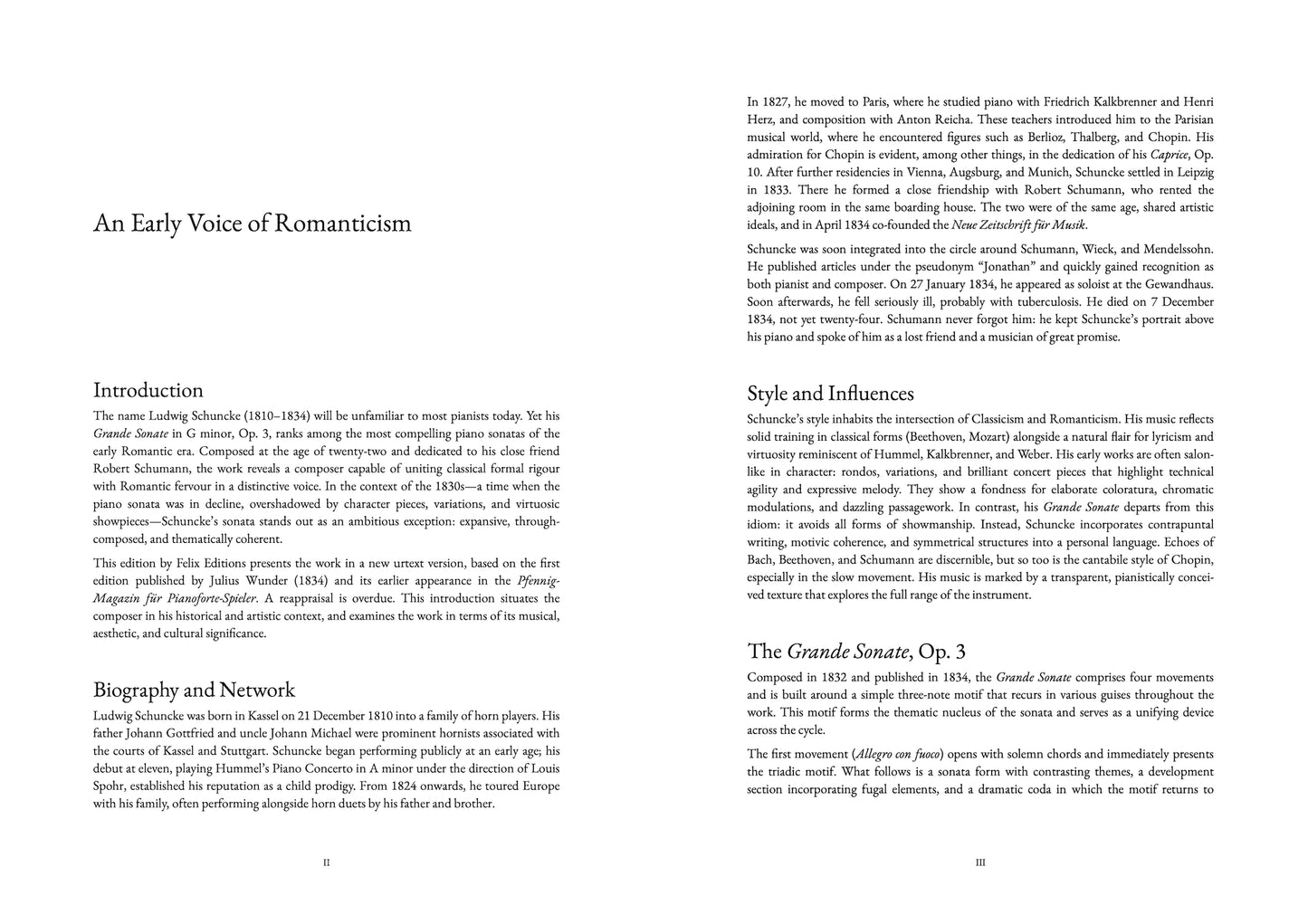


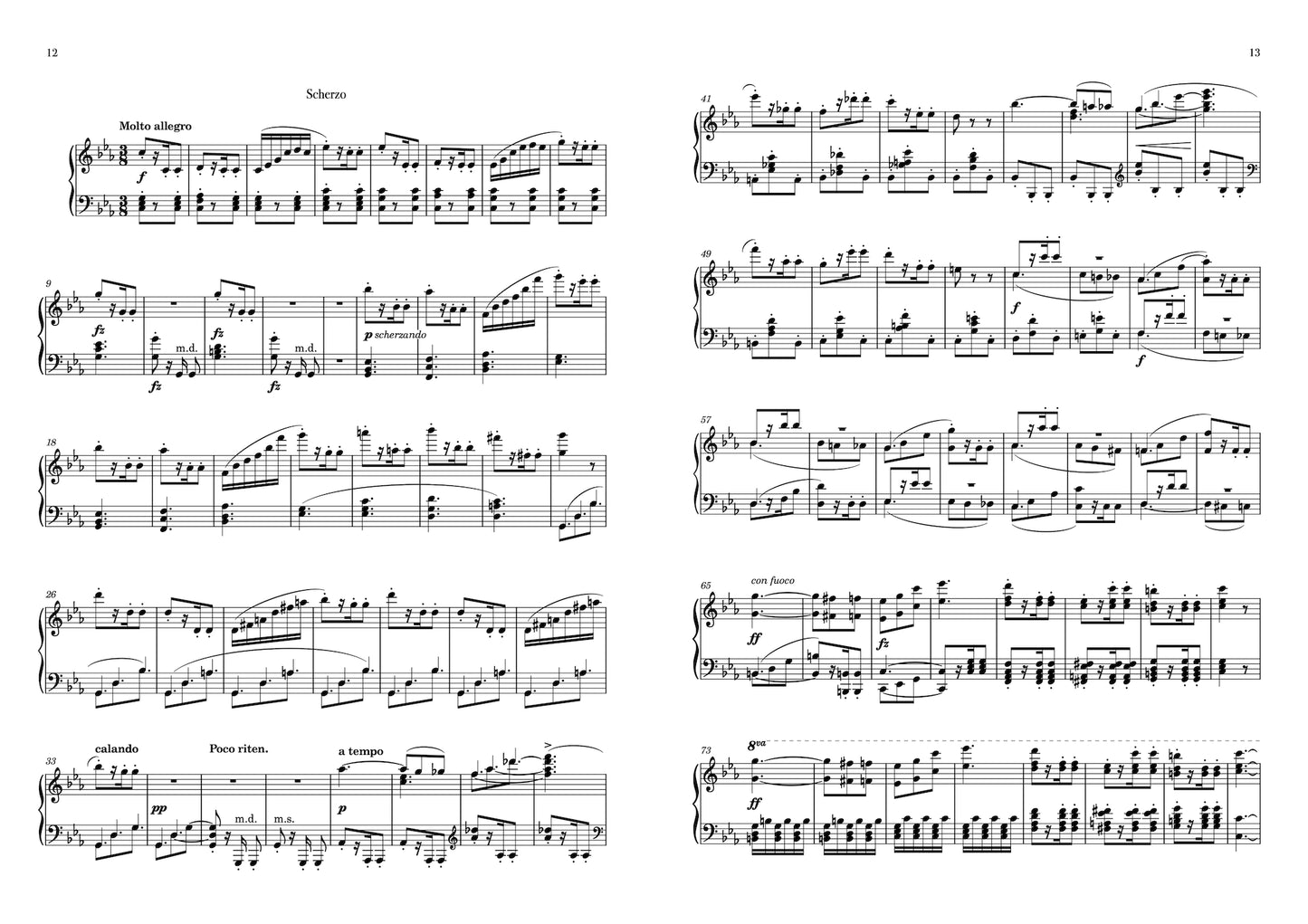
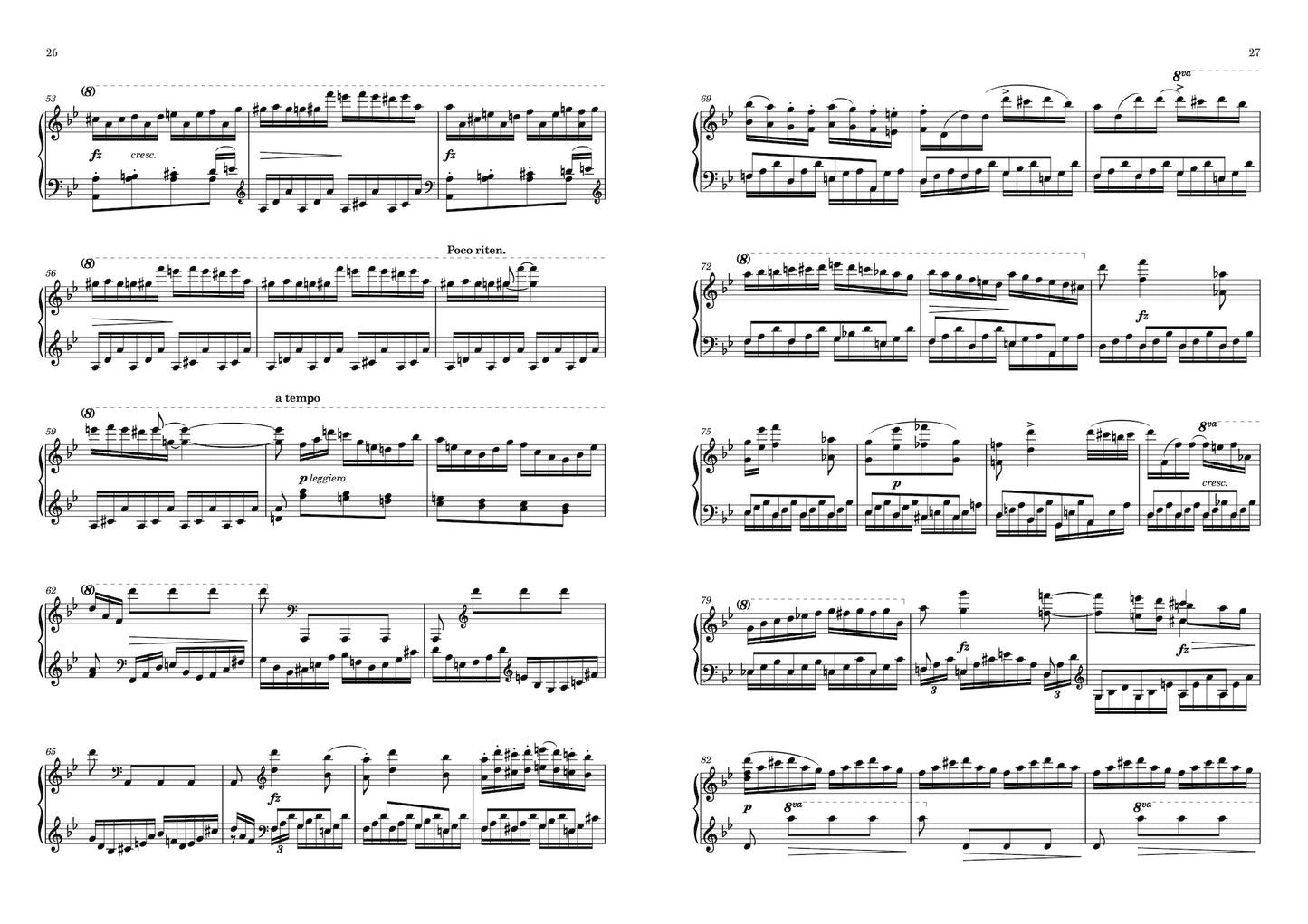

-
Premium Editions
Our paper editions are pleasing to the eye: gorgeous and heavy cream paper produced in an environmentally friendly manner. We print our albums ourselves and use pigmented ink instead of toner. Due to the ink soaking into the paper, a beautiful print is created. All our albums are bound with a steel binding spine, so the albums last a long time and stand perfectly flat on the piano.








